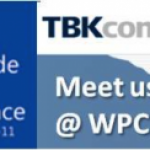The magic formula for ISV’s economic productivity is as easy as ABC
ISV Economical Activity is as easy as ABC.
The other day, I attended an annual event of Cluster Edit – a professional association of independent software vendors (ISVs) and other IT professionals of the Rhône-Alpes region of France.
For those of you who are not familiar, Rhône-Alpes is the 2nd economic region of France with high ambitions for its economy players – in particular the burgeoning IT sector – as was clearly confirmed by the high representatives of the Regional Council and the Lyon agglomeration, event sponsors and keynote speakers. Rhône-Alpes also benefits from a great living standard – an important quality, especially for economically developed regions.
But let’s return to the software industry in Rhône-Alpes. Quite a few major French IT companies have their origins here:
▪ Infogrames
▪ Cap Gemini Group
▪ Spartoo
▪ Cegid
▪ Esker
This year Cluster Edit’s annual event speakers underlined the achievements and the contributions of the IT sector to the local economy. They all agreed that the high quality French engineers and the local entrepreneurs are the future of business growth for the region. This goes beyond the IT sector itself and covers e-Health, Transportation, Manufacturing and Smart Cities initiatives. Cluster Edit has the ambition to become the B2B Silicon Valley and positions itself to attain it.
Some figures have caught my eye though: Rhône-Alpes ISVs have a total revenue of €3.5 Billion and employ 33,000 people.
Now, that makes just over €100K per employee – quite a typical amount for an IT service company or a software systems integrator (commonly known in France as an “SSII” acronym, which literally stands for “service company for IT engineering”) . But is it “enough” for an ISV?
The difference between ISV and IT service companies (SSII) is that service companies normally charge for their employees’ time, while an ISV can charge for the value of their software products that are “manufactured” in high volumes with zero incremental cost. So, normally, the revenue per employee for ISVs should be more… significantly more!
The software business is special in many ways, including the fact that most of its costs is in its employees – software engineers & programmers (SW) and sales & marketing (S&M). They (not the machines) are the generators of the software company’s revenues. Therefore, the revenue per employee is an easy and meaningful measure of ISV’s economical productivity, whatever that means.
I decided to compare these numbers by looking at an arbitrary list of software companies. I don’t have any logical explanation for these choices apart from picking up the names with recognizable brands (at least in France) and publicly available figures[1]. So here it is:
|
Company, Country of origin |
Revenue per employee |
Comments |
| Google, USA |
€700K |
True, it’s not really an ISV, but most of their personnel are still SW and S&M |
| AVG, Czech Republic |
€535K |
Global anti-virus ISV |
| Microsoft, USA |
€516K |
Global ISV |
| Checkpoint Software, Israel |
€373K |
Global anti-virus ISV |
| SAP, Germany |
€248K |
Global ERP ISV |
| Salesforce.com, USA |
€226K |
Global CRM ISV |
| Mathworks, USA |
€201K |
Global ISV for math applications |
| Esker, RA France |
€140K |
Global document automation ISV |
| Cegid, RA France |
€129K |
ERP leader in France |
|
Sage, UK |
€127K |
Global ISV for SME management |
| Rhône-Alpes region, France |
€106K |
An average for RA ISVs |
| EBP, France |
€ 84K |
ISV for SME management |
Note: what is really important here is the order of magnitude, rather than the exact number, so it’s not about statistics…
So, how come some ISVs can generate multiples of revenue per employee compared to other ISVs?
Meet my magic formula for ISV’s economic productivity:
ISV Economical Productivity = A x B x C,
where:
A = Ambition, in particular to become a world leader in your application field.
In the software industry, much more than in others, your market share, even a niche, is like a snowball: the more you have, the faster it grows
B = Business model, that gives you a competitive advantage (just look at those anti-virus ISVs!)
C = etC. Everything else that you know you should be doing to differentiate your offering and not doing yet (call me if you don’t know)
This formula stresses the fact that you have to get all three components in order to really get beyond a symbolic €100K / employee revenue threshold.
So here’s a worthwhile ambition for next year’s Cluster Edit annual event:
grow the average €K/employee by [fill your own number] %.
After all, it’s as easy as ABC!
Leon Rubinstein is a Partner with TBK Consult – a business development outsourcing solution provider for ambitious ISVs that wish to grow beyond borders.
He works out of Lyon – a capital of Rhône-Alpes region in France.
[1] Some publicly available figures are older than 2012. All currencies are converted to €. No guarantee for accuracy!







